Many community bankers would agree that loan agreements and debt covenants are very important tools for monitoring the status of loans and the activities of small business borrowers.
But are these critical tools being used? Even though they are widely known as great tools loan agreements and debt covenants are underutilized by community banks on small business loans. Worse yet, many community banks are failing to monitor the loan agreements they have put in place.
Why the Resistance?
There are several common reasons why community banks don’t utilize loan agreements and debt covenants. One is that they don’t want to assume the liability associated with monitoring them. Another is that they don’t believe the loans are big enough to justify the cost and effort required to monitor them. Or, they see that other community banks aren’t requiring them, so why should they?
Perhaps the biggest reason, though, is simply the fact that most community banks don’t want to deal with push back from borrowers over their perception that the bank is telling them how to run their business. But it’s important to realize that loan agreements are good for both your bank and your borrowers — and to explain this to borrowers who resist them.
From your bank’s perspective, loan agreements build a “fence” around your borrowers that they can safely run around in. This aspect is also very beneficial for the borrower. It limits their ability to grow too fast and assume too much debt relative to equity, and they limit the ability of owners to take out too much money to support their lifestyle.
Perhaps most important, loan agreements establish upfront expectations with the borrower about the importance of providing ongoing financial information to the bank. This information will enable the bank to monitor their performance and spot potential problems before the business finds itself in serious financial trouble and on the verge of default. This is why after the agreements are made it is so crucial for the bank to monitor the performance of the company.
Make it clear to borrowers that your bank’s objective in requiring loan agreements isn’t to put them out of business if they hit a rough spot. Rather, it’s to identify problems early on so you can address them with the business owner before it’s too late.
What is the Best Way to Structure a Loan Agreement?
When structuring these loan agreements, try to make them as simple for the bank and the borrower as possible. If you try to over-engineer them to include every potential scenario that might arise, you will frustrate your borrowers and it will be impossible for you to monitor the agreements. In general, there are six debt covenants that should be included in a typical small business loan agreement:
- A requirement to provide periodic financial information
- Minimum debt service coverage ratio
- Maximum debt to tangible net worth ratio
- Minimum current ratio
- Minimum working capital level (with step-ups)
- Minimum tangible net worth level (with step-ups)
Most automated doc prep programs include templates for standard loan agreements that you can customize for each individual small business loan. It is also very important to clearly state your bank’s definitions for the covenants in your loan agreements. If there is any ambiguity in your definitions, the borrower could use this as a legal defense. For example, if there are different ways to calculate one ratio, it is important to include the banks formula when writing out the terms.
It’s also a good idea to establish a minimum loan size for which loan agreements and debt covenants will be required. For example, you might require them for small business loans larger than $250,000 with maturities over one year and a total bank exposure of more than $1 million.
The Crucial Step—Active Monitoring
Keep in mind the fact that an unmonitored loan agreement is worse than no loan agreement at all. If you try to exercise remedies against a borrower in a court of law but have not been actively monitoring the agreement, the borrower will likely assert that you acted in bad faith by not informing them they weren’t in compliance.
In this example, a judge will likely rule that you have waived your right to default by virtue of your non-action. So if you are going to go through the process of creating and utilizing loan agreements and debt covenants, be sure to put in place a framework for actively monitoring them.
We can help answer your questions about loan agreements and debt covenants, as well as certify that your borrowers are in compliance. Call us if you wish to discuss this further 417-881-0145.

